When I say Nik Kershaw what’s the first thing that comes into your mind? For me it’s the blonde highlighted mullet combined with his intensely brooding stare on many of his album covers. For others of course it might be the conflicting knowledge that along with writing the brilliant songs ‘Wouldn’t It Be Good’, ‘The Riddle’ and ‘I won’t Let The Sun Go Down On Me’ he also penned ‘I Am The One And Only’ for Chesney Hawkes. Sigh.
And that’s not the only surprising (and in that last case, vaguely disappointing) fact about the man. Did you know that in 1984 he spent 62 weeks in the UK singles’ chart, more than any other soloist? And how about that in his fifth year at senior school he was the pole vault champion or that he once worked in Ipswich Unemployment Benefit Office? Bet you didn’t.
OK, so now we’ve established that I know more about Nik Kershaw’s early days than you do, let’s go back to the beginning and see how his fame came about.
Nicholas David Kershaw was born in 1958 in Bristol, although his family moved to Ipswich in Suffolk the next year, thus depriving him of growing up with a marvellous West Country accent. It was at Northgate Grammar School for Boys where Nik met a friend who would accompany him on the early part of his musical journey. Russell Chesterman already owned a guitar and became a quarter of Nik’s first group when Kershaw was just sixteen. The musical power of ‘Thor’ took over Rushmore Village Hall’s stage in August 1974 with Nik singing and playing guitar, Russell on bass, Roger Waters playing the drums and Nig Cook taking up a second guitar. Nig? I am presuming his real name was Nigel and he somehow thought this was a cool way of shortening it. It isn’t Nig, it isn’t. But I understand: Nigel = Rock, Nig = Hard Place. Tough one.
Playing covers of hits such as ‘Gene Jeanie’ they were reportedly quite loud. And ‘allegedly’ not that good. But that didn’t stop Nik’s enthusiasm for playing and so, after twiddling the line-up to include new drummer Kim Williamson, he welcomed his newly-named band Half Pint Hogg into his world. Hmmm, not sure about that one quite frankly. Although obviously neither was he, as the following year he dropped the ‘Half Pint’ bit and the band strode on as Hogg (not really feeling that one either Nik, sorry).
After dropping out of school halfway through studying for his A-levels, he took the aforementioned day job at the Benefits Office so that he could continue focusing on his music in the evenings. Hogg practised diligently for the next three years, although the line-up changed again; Chesterman was replaced by Roy Little and good old Nig handed his guitar over to Paul Hart. They didn’t gig all that often, but it was during one of their rare live shows that the bassist of rock/funk/jazz outfit Fusion, Kenn Elson, offered Nik the opportunity to fill their vacant guitarist role. Nik took it and stayed with the group until they split in 1982.
Finding himself now unemployed, Nik used a friend’s studio to write and record in and spent his time making demos, sending them to record companies and then reading his rejection slips when they dropped onto his doormat. Finding himself not getting anywhere this way he put an advert in the Melody Maker for a manager, and subsequently took on the services of Mickey Modern, who had once been the manager of South London blues band Nine Below Zero. Modern went back to some of the record companies that Nik had received noes from already and managed to sweet talk the head of A&R at MCA Records in to giving Mr Kershaw a trial period singles deal.
In September 1983 ‘I Won’t Let The Sun Go Down On Me’ hit number 47 on the UK Singles’ Chart, followed by ‘Wouldn’t It Be Good’ in January 1984. This one got to number four, stayed on the charts for five weeks and also did well in many other countries, including Germany, Italy, Australia and New Zealand. MTV in the US featured the video heavily, and the song climbed to number 46 there. The album that the two songs came from, ‘Human Racing’, was released in March (the cover featured a head shot of Nik staring moodily, wearing a shiny grey jacket) and it went platinum in many parts of the world. Another two Top 20 UK hits came from it: the title track, and a re-release of ‘I Won’t Let The Sun Go Down On Me,’ which got to number two this time round.
In what was proving to be a jam-packed year Kershaw wrote and released his second album, ‘The Riddle’ (the cover featured Nik staring moodily, in front of an atmospheric tree) which also went platinum and gave him three Top Ten songs: title track ‘The Riddle’ (number three in the UK), ‘Wide Boy’ and ‘Don Quixote’. That would be enough for most people, but not busy Nik. He obviously didn’t like having free time, as he also managed to squeeze two European tours into 1984.
1985 didn’t let him slack off either: July saw Nik perform at Wembley for Live Aid and Elton John asked him to play guitar and provide backing vocals on his song ‘Nikita’ – one of several collaborations between the two. John became a good friend, describing Kershaw as ‘having one of the best mullets of a generation.’ No, hang on – I must have that wrong. Perhaps John said Kershaw was ‘one of the best songwriters of a generation’. That sounds more likely doesn’t it? Although the first statement is also valid in my book – I would say Kershaw’s mullet was second only to Limahl of Kajagoogoo.
Nik released his third album, ‘Radio Musicola’ (sadly Nik wasn’t on the cover of this one) in 1986. It was well received by critics, but didn’t strike a chord with the buying public. Third album ‘The Works’ (Nik staring moodily, with slicked back mullet, looming over train tracks) also sank commercially in 1989 and he decided to concentrate on song writing; collaborating with (amongst others) the aforementioned Chesney Hawkes, Bonnie Tyler, The Hollies and everybody’s favourite forgotten ‘90’s boy band, Let Loose.
Nik didn’t entirely give up on performing however. 1999, 2001, 2006 and 2010 saw the releases of further original studio albums ’15 Minutes’ (Nik as imagined by Andy Warhol on cover; wearing sunglasses but probably staring moodily behind them), ‘To Be Frank’ (House of Mirrors distorted Nik – no moodiness at all), ‘You’ve Got To Laugh’ (which was done through his own label, Shorthouse Records and was only available digitally - no Nik at all on the cover) and ‘No Frills’ (acoustic, and still no Nik on the cover) respectively. In 2012 he supported the release of ‘Ei8ht’ (blurry cover, STILL NO NICK) with a small UK and European tour.
Kershaw continues to perform, but he no longer has a mullet. He also seems to smile a lot in pictures now which is frankly not good enough. Bring back your moody stare Nik please.
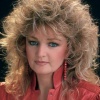
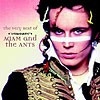
 - Booklet-1-square-100x100.jpg)
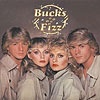
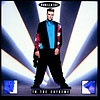
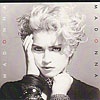

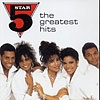


Do You Remember Nik Kershaw?
Do You Remember Nik Kershaw?